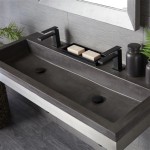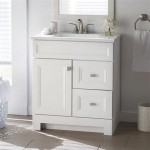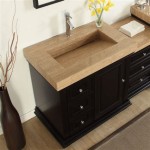Is a Floor Drain Required in Bathrooms?
Floor drains are essential components in bathrooms, serving a crucial role in preventing water damage and maintaining hygiene. While their presence may seem obvious in some bathrooms, the question of whether they are truly required arises, especially in modern, well-designed spaces. This article explores the importance of floor drains in bathrooms, delving into their benefits and considerations for installation.
Preventing Water Damage
The primary function of a floor drain is to collect and remove excess water from the bathroom floor. This is particularly crucial in areas prone to spills, such as showers, tubs, and sinks. Without a floor drain, water can accumulate and lead to various problems. Stagnant water fosters the growth of mold and mildew, posing health risks and creating an unpleasant odor. Moreover, water seeping into the subfloor can cause structural damage, resulting in costly repairs. Floor drains effectively prevent these issues by providing a direct path for water to drain away.
Ensuring Hygiene and Safety
Beyond water damage, floor drains contribute significantly to bathroom hygiene and safety. They prevent the accumulation of soap residue, hair, and other debris that can create slippery surfaces and attract pests. This is particularly important in showers and tubs, where the risk of slips and falls is higher. Floor drains also help maintain a clean and sanitary environment by preventing the growth of bacteria and other microorganisms that thrive in moist conditions.
Considerations for Installation
While floor drains offer numerous benefits, there are certain considerations to keep in mind when deciding on their installation. The size and location of the drain are crucial factors. A larger drain with a wider opening can handle greater volumes of water, reducing the risk of overflow. Placement should be strategic, ensuring that water flows towards the drain from all areas of the bathroom. Moreover, the drain should be installed with a proper slope to ensure efficient water drainage.
Benefits of Floor Drains in Modern Bathrooms
Modern bathroom designs often prioritize aesthetics and minimalism. However, this does not negate the importance of floor drains. In fact, advancements in drain technology have led to stylish and discreet options that seamlessly integrate with contemporary bathroom designs. Sleek, low-profile drains are available, offering functionality without compromising on aesthetics. Additionally, modern drain systems are designed to be odor-free and easy to clean, minimizing maintenance requirements and ensuring a hygienic bathroom environment.
Exceptions to Floor Drain Requirement
While floor drains are generally recommended for bathrooms, there are instances where they may not be absolutely necessary. Small, well-ventilated bathrooms with minimal water usage may not require a floor drain. However, even in such cases, it is advisable to consider the long-term impact of potential water spills and the potential for future renovations.
In conclusion, floor drains, particularly in bathrooms with showers or tubs, play a crucial role in preventing water damage, maintaining hygiene, and promoting safety. Although modern bathroom designs often prioritize aesthetics, advancements in drain technology have produced stylish and functional options that seamlessly blend with contemporary spaces. While exceptions may exist, the benefits of floor drains generally outweigh any potential drawbacks, making them a prudent investment for any bathroom.

Faq Are Floor Drains Required In Commercial Bathrooms

Floor Drain Wikipedia

Which Floor Drain Is Better For Toilet In

Bathroom Floor Waste Regulations Nsw Strip Drains Sydney Linear Drain Blog

45 Lovely Shower Floor Drain Design Ideas Engineering Discoveries Drains

Modern Bathroom Floor Drain Design Ideas Engineering Discoveries Des Tiles Plans Wet
How To Design 2nd Story Bathrooms So They Don T Start Dripping On The 1st Floor When Toilet Overflows Quora

Jar Italia Stainless Steel Bathroom Floor Drain At Rs 1950 In Pune

A Plumber S Guide To Residential Floor Drain Selection And Installation Plumbing Mechanical

Modern Bathroom Floor Drain Design Ideas
Related Posts







